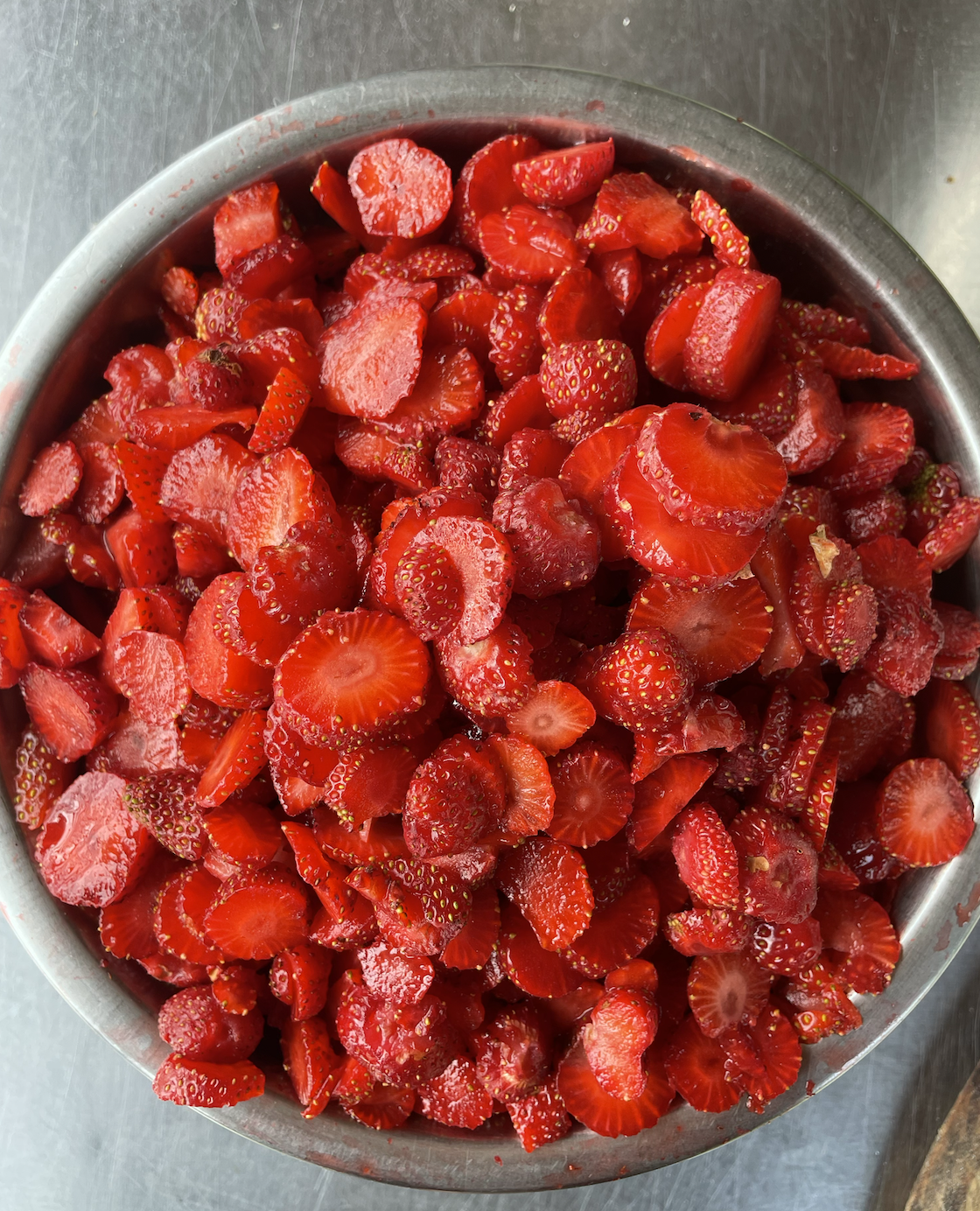Strawberries
The first time I had a real strawberry was four years ago at Massaro Farms, a small New England organic farm in my hometown. Unlike bananas, peaches, and apples, a strawberry’s growth is stunted the moment it is picked. Most strawberries are ripped from their beds before maturity, so that their delicate flesh can withstand long journeys. Even if their skin is fully red, their cores are marred with streaky white scars. I used to think this was normal.
I was working as a farmhand, although, a more accurate term would be “following behind.” That summer, the farm staff lapped me in the strawberry fields, bending and balancing in ways I never could, revealing to me the truth behind the black plastic blankets covering each bed—organic farming’s dirty little secret. We squatted in burning sunlight for hours, combing every bush, reaping dawn’s newly ripened berries. I discovered burning muscles in my back, thighs, and shoulders.
At Massaro, I realized what a strawberry could taste like, when the rain (little) and the year (third) and the timing (ripened) was just right. Enticingly fragrant, ruby red on the inside.
I come from a family of farmers, and Massaro helped me understand it. I know that farming is skilled, difficult labor: I grew up reciting Li Bai’s poetry of toiling farmers, a life that feels so distant to my own. My paternal grandma, my nai nai, still relives the worst famines. My aunts raid my nai nai’s home every week to sneak out the rotting leftovers in her home, afraid that she will hurt herself by eating them. My dad doesn’t tell her that he can’t keep the Chinese chives alive in our front yard.
When I am home, my family eats every meal together. We start by reciting a prayer, thanking God for the food on the table, the hands that have prepared it. I used to only think that meant the hands of the person who had chopped, cooked, and assembled the dishes. Now, I think of the picking.
Since my time at Massaro, I mark the beginning of every summer with the first sour strawberries in May. They are just a few weeks shy from their peak, but I am impatient, eager for the liberating taste of summer. When their time is right and the harvest is too abundant, we make strawberry sweetzas at the Yale Farm. I scoop sliced Massaro strawberries on top of a caramelized onion base, drizzle balsamic glaze and olive oil, garnish with mint leaves and dollops of whipped ricotta. I slide the sweetza into a blazing wood-fired oven, its warmth and intensity rivaling the sun.
This summer, I was living in southern France, far away from Connecticut’s farmers markets and endless pick-your-own strawberry fields. But at the farmer’s market in Valence d’Agen, they also had real strawberries. Charlotte, Mara des bois, Ciflorette, Gariguette: red gems gleaming from a grid of plastic cartons. I could tell that they have been nurtured until full maturity: their flesh was firm but not hard, their seeds were golden yellow but not bloody red, and their scent was sweet but not sickeningly so.
One week, my friend gave away her leftover strawberries from Valence d’Agen. As we were devouring them outside, one strawberry fell on the ground. No one wanted it anymore, so it sat alone and dejected in its big bowl. I brought it home to the gîte, filled its tub with water, and peeled back the layers of warm dirt. I thought of the farmer who had nurtured it and fed it with water and sunlight, waited years to prepare its soil bed and bear fruit, chosen it for a carton to be driven to the market.
I ate the strawberry, as if to tell them: It was worth it.
